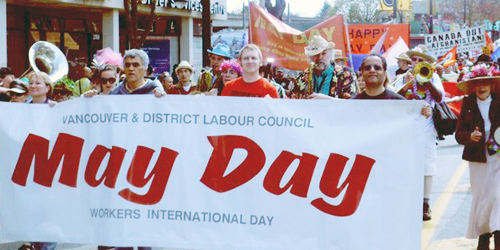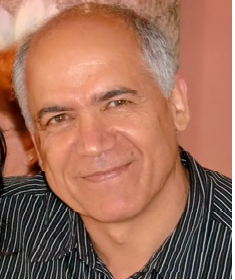
A Letter to Workers’ Unions
Within the past two to three decades, we have contacted you in order to ask for your support for the workers in Iran who are deprived of their rights and are persecuted. Your support has been a great source of inspiration for the workers and has directly affected the process of their release. This time, however, I am writing to let you know about the marked progress of the working-class movement in Iran. This does not mean that the pressure on workers has been lessened or that the Islamic Republic has conceded to some of their rights. The situation is as it was before; in addition to arrests and imprisonments, the working-class activists have been subject to flogging too. Yet, it might be interesting for you to know that despite these pressures, the working class movement has also progressed.
-Several years ago one of the authorities of the regime confessed that more than 2,000 strikes took place in Iran in a year. Nowadays this number has grown much higher. Every day there is news about several worker strikes and protests from every corner of the country. Furthermore, the strikes have spread to large industrial centres and the duration of the strikes have risen to 10 to 15 days and sometimes up to two months.
-We also witness workers protesting outside the parliament in Tehran and outside government buildings in other towns. For instance, on March 12, 2017 more than ten thousand retired workers and teachers protested in front of the parliament in Tehran.
-An important achievement of the workers is the nationwide protests. In the past two years teachers have organised several nationwide protest meetings and on some occasions have carried out simultaneous protests in fifty cities. The retired teachers have also started protests and organised simultaneous demonstrations in twenty cities. The striking workers also organise demonstrations at city centres, marching and chanting for their demands. Although there is no right to strike and protest in Iran, the Islamic Republic is unable to prevent them due to their volume and number. Circulating protest petitions is also another form of the workers’ mass protest; the petition of the petroleum industry workers signed by 140,000 workers, teachers’ petition signed by 140,000 teachers and the petition for the pay rise signed by 40,000 workers are some examples.
-An interesting phenomenon is the widespread use of the social media by the workers for organising their protests. For instance, despite Internet filtering, censorship and limitations imposed by the regime, more than 50,000 teachers have joined ten different groups on theTelegram app participating in lively discussions.
-Another interesting development is the participation of the workers’ families in the protests. This has grown in the past two years and has turned into a settled tradition that has changed the profile of the workers’ movement. For instance, the spouses of the nine imprisoned workers of the iron mine of the city of Bafq pitched a tent in front of the governorship of the city for several days while the mine’s 5,000 workers were on strike; this action drew much public and media attention. In the past few weeks workers of Ahvaz Steel Company, Hepko Machinery, Zanjan Vegetable Oil and Parsilon of Khorramabadhave demonstrated in city centres together with their families and managed to win some of their demands. Participation of families draws the attention and the solidarity of city inhabitants and makes it difficult for the organs of the regime to suppress the protests.
-Solidarity among the workers of different sectors and the feeling of unity and solidarity between the workers and other segments of the society is another fact of interest. For instance, on January 15, 2017, at least 15 firefighters lost their lives due to lack of security measures and proper tools in a fire at the Plasco Building in Tehran; thousands of people showed their solidarity with their families by attending firefighting stations across the country. This, in fact, was an important political move against the regime.
-Another important case is the strengthening of the solidarity between workers and teachers, in particular following a joint communiqué issued by Esmail Abdi, the chairperson of teachers’ guild, and Jaafar Azimzadeh, the chairperson of the Free Workers’ Union of Iran. These prominent labour activists issued their joint statement last year from prison and protested at the regime’s disparaging of workers’ protests as ‘national security concerns’ in order to attack them. Protests to force the regime to withdraw such tactics is a fight that has now become widespread within the working class movement. It should also be added that the workers and teachers that are arrested issue statements protesting not only their own imprisonment but also the repression against people’s struggles generally. This is a manifestation of the prevalent climate within the working class movement in Iran today.
-The progress of the working class movement is also evident in the slogans. Slogans against bribery and demanding resignation of top officials is widespread. Slogans against the salary of the state authorities, which is at least 24 million Toumans in Iranian currency and the minimum wage, which is less than a million and is one fifth of the official poverty line are also chanted.
– Prominent working class leaders, who are among the most important achievements of the working class movement, play an important role in the struggles by issuing statements and by appearing in the mass media. Of course, they also risk dismissal from their jobs and long term imprisonment.
This progress has been achieved despite worker activists being subject to persecution, arrest, dismissal from jobs and other social deprivations and large scale unemployment. According to official statistics, 7 to 10 million people are unemployed, and millions of university graduates have joined the reserve army of the unemployed. Some production centres have not even paid the one-fifth-of-the-poverty-line minimum wage for up to two years.
Theseachievements of the workers’ movement have giventhe working class a significant political standing within society and have drawn the attention of other social movements. There are good indications to assume that the workers are at the verge of forming their nation-wide organisations of which they historically have been deprived.
I should also add that the support of the international workers’ organisations have provided the workers in Iran with a large scale international political support and solidarity. I once again sincerely thank you for your unconditional support for the workers’ struggles and imprisoned working class activists; your support has had an undeniable impact on the advance of the working class movement in Iran.
I send you my regards and my hope for the international success of the working class movement against capital’s barbarism.
Asqar Karimi
For the Worker-communist Party of Iran
April 6, 2017



Be the first to comment